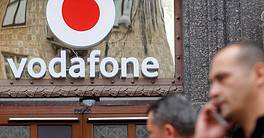In 2023, Chinese fast-fashion retailer Shein acquired a stake in struggling rival Forever 21; food-delivery company Wonder Group gobbled up meal kit service Blue Apron; and South Korean tech platform Naver purchased second-hand marketplace Poshmark.
There might not be anything uniquely special about these cases of big fish-eating small fish—yet, a new report by Deloitte indicates, we might have arrived at a crucial stage in the e-commerce sector’s consolidation process.
Only a few established players occupy the space while their competitors, small and medium upstarts in particular, struggle in their efforts to scale up until they are taken over.
In 2021, e-commerce retail expansion-stage activity translated into 77 completed transactions. In 2022, dealmaking declined to just 44 for the full year. As 2023 came to an end, only 21 transactions had been finalized.
“The retail sector is enormous yet dominated by incumbents, with key segments and product categories packed with well-known brands commanding considerable recognition and market share,” the report reads. While e-commerce still represents an unparalleled way to launch new businesses and products, the sector is ever more crowded.
“Turnover is rapid, so entry points can occur, but hitting an inflection point of growth is challenging,” the report continued. This is also reflected in financing figures, with the median expansion-stage deal size falling to a low not seen in a decade: less than $400 million in aggregate value in 2023 versus over $1 billion in the five years prior.
Meanwhile, industry leaders are capitalizing. In the second quarter of 2023, online sales totaled $277.6 billion. That’s 2.1% more than in Q1 2023, and 7.5% more year-over-year.
The digital portion of total retail is over 15%, Deloitte estimates. “That growth represents a steady, unending increase in e-commerce’s penetration into retail over the past two decades, culminating in a recent spike during the Covid-19 pandemic that has yet to slide.” Before 2020, e-commerce penetration in the US was already climbing, albeit by only about 10%.
Are we finally heading towards a future without physical stores? Not yet: about 1,000 net new brick-and-mortar stores were on track to open last year in the US.




